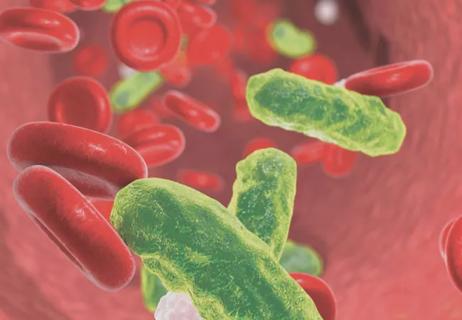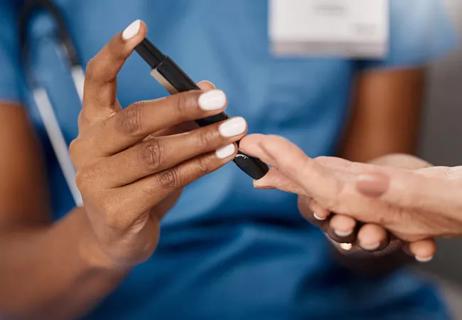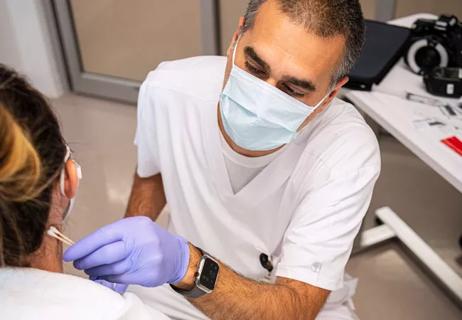The goal is to prevent postsurgical VTE

With the mechanical prevention of postsurgical venous thromboembolism (VTE) squarely in the hands of nursing teams, the consistent use of intermittent pressure compression (IPC) is a major issue for nurse leaders across the country.
Cleveland Clinic is a non-profit academic medical center. Advertising on our site helps support our mission. We do not endorse non-Cleveland Clinic products or services. Policy
“Since VTE prevention guidelines call for IPC stocking use 20 out of 24 hours, adherence to the quality measure requires extensive documentation,” says Deborah Solomon, MSN, RN, ACNS-BC, clinical nurse specialist on a postsurgical urology unit on Cleveland Clinic’s main campus.
The unit’s nursing team conducted data analysis in late 2012 and found that IPC documentation and wear compliance were below benchmark. The unit initiated a pilot program in 2013 aimed at improving compliance, with bedside nurses responsible for documenting every hour whether patients were wearing the mechanical stockings. However, that level of documentation for already busy nurses proved more challenging than anticipated.
For the next year, the nursing team struggled in the effort and recognized that there had to be a better way. “Then we found it,” Solomon says. “We realized that this was a delegable task and devised a plan through our shared governance unit to give PCNAs ownership of IPC documentation.”
It worked. In early 2014, nurse leaders met with the unit’s bedside nurses and PCNAs to emphasize their critical role in the effort. In the following months, audits found a sharp increase in achieving IPC goals, with documentation reaching 75 percent and wear compliance at 55 percent.
PCNAs were instrumental in documenting stocking compliance every hour, Solomon says. Initially, nurses were to document even hours and PCNAs odd hours, but this system was rife with communication issues, so the PCNAs soon took over all documentation.
“The PCNAs have been fantastic — they have risen to the occasion and taken ownership of this initiative, allowing the RNs to focus on other critical tasks,” Solomon says. “With a team effort and shared governance involvement, our IPC compliance rates met benchmark, which was set at 75 percent after the stronger role of the PCNA was initiated.”
Nurses and PCNAs in the unit say the approach is a win for them and for patients.
“It makes sense for PCNAs to document wear compliance, since that goes hand in hand with their responsibilities of helping patients to and from the restroom or to be bathed— situations in which the stockings need to be removed and put back on,” says Tajana Glover, BSN, RN. “It’s a big help, because it’s one less minute I need to spend documenting, so I can focus on other work.”
Jennifer Dasko, PCNA, says she welcomed the opportunity to take this responsibility. “It makes you feel like you’re making a difference, and that’s why PCNAs do what we do,” she says. “When we do our hourly rounding, we explain to patients how important it is to wear the stockings to help with blood flow after surgery.”
The shared governance model was so successful that all medical and surgical nursing units across Cleveland Clinic now place the primary responsibility for IPC documentation in the hands of PCNAs. And most recently on the urology unit, the observed compliance rate was about 80 percent, with documentation at 72 percent, and wear compliance is remaining steady at 55 percent.
“Giving the PCNAs ownership of this initiative was a creative solution that has been the key to our continued success,” Solomon says.
Photos © Russell Lee

Resources, education, mentoring help nurses segue to formal leadership roles

Holistic nurses work across all nursing specialties to support patients and caregivers

Nurses play pivotal role in patients’ ability to recover in the comfort of their own homes

Advocating for patient safety is imperative in fast-paced surgical settings

Advice for those pursuing a WOC nursing career

Redesigned protocols enhance infection-prevention measures

Longevity in healthcare, personal experiences may provide caregivers with false sense of confidence

Specialized team prioritizes trauma-informed care and evidence collection